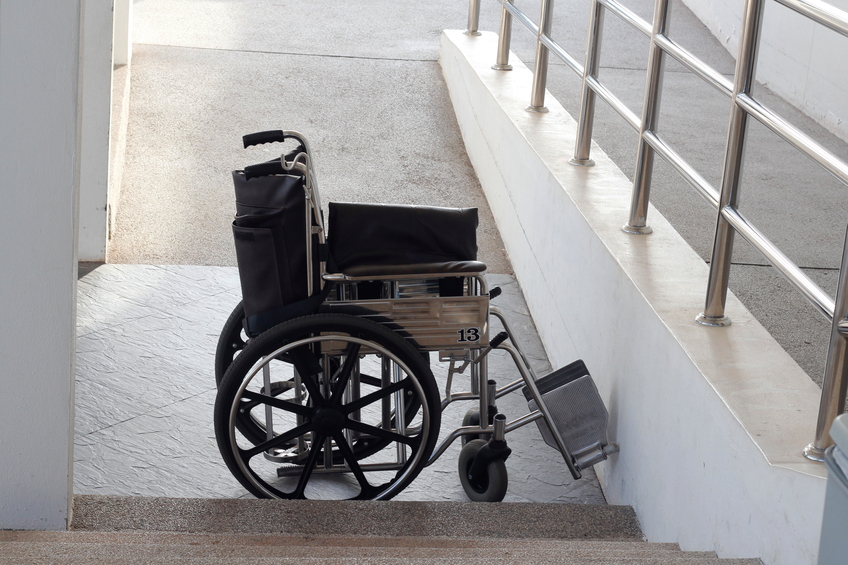Tennessee Transportation & Health/Safety/Welfare 24 PDH Discount Pkg 2
Traffic Control Concepts for Urban and Suburban Streets (C07-004)
Controlling Electrical Hazards (E02-002)
Personal Protective Equipment (T03-003)
ADA Update: A Primer for State and Local Government (A01-005)
Public Right of Way Accessibility Guidelines (PROWAG) (C02-041)
Engineering Ethics Case Study: The Challenger Disaster (LE3-001)
Ethics in Professional Practice (LE2-007)

This online engineering PDH course presents the fundamental design principles common among all roundabout types. This course also presents detailed design considerations specific to multilane roundabouts, rural roundabouts, and mini-roundabouts.
Designing the geometry of a roundabout involves choosing between trade-offs of safety and capacity. Roundabouts operate most safely when their geometry forces traffic to enter and circulate at slow speeds. Horizontal curvature and narrow pavement widths are used to produce this reduced-speed environment. Conversely, the capacity of roundabouts is negatively affected by these low-speed design elements. As the widths and radii of entry and circulatory roadways are reduced, the capacity of the roundabout is also reduced.
Furthermore, many of the geometric parameters are governed by the maneuvering requirements of the largest vehicles expected to travel through the intersection. Thus, designing a roundabout is a process of determining the optimal balance between safety provisions, operational performance, and large vehicle accommodation.
This 4 PDH online course is applicable to traffic engineers, transportation planners, managers, and other technical professionals who are involved in the geometric design of roundabouts.
This PE continuing education course is intended to provide you with the following specific knowledge and skills:
- Familiarizing with the different types of roundabouts
- Understanding the geometric elements
- Learning the general design principles
- Selecting the appropriate inscribed circle diameter
- Designing the alignment of approaches
- Designing entry and exit curves
- Designing the central and splitter islands
- Determining the stopping and intersection sight distances
- Designing methods to avoid vehicle path overlap
In this professional engineering CEU course, you need to review Chapter 6, "Geometric Design", of the Federal Highway Administration Publication FHWA-RD-00-067, "Understanding Roundabouts".
Upon successful completion of the quiz, print your Certificate of Completion instantly. (Note: if you are paying by check or money order, you will be able to print it after we receive your payment.) For your convenience, we will also email it to you. Please note that you can log in to your account at any time to access and print your Certificate of Completion.

This online engineering PDH course discusses traffic control concepts for urban and suburban streets. In planning and designing a traffic signal control system, one must first understand the applicable operational concepts related to signalized intersection control and signal-related special control. A number of commonly used proprietary traffic systems and simulations are discussed in this chapter. These discussions provide illustrations of the technology.
This 7 PDH online course is applicable to transportation planners, traffic engineers, agency personnel as well as design and construction personnel involved with the development, review, approval, implementation, and assessment of traffic control planning, designs and implementation.
This PE continuing education course is intended to provide you with the following specific knowledge and skills:
- Understanding the various control variables
- Learning the sampling, filtering and smoothing techniques
- Knowledge of traffic signal timing parameters and signal phasing
- Dealing with isolated intersections
- Understanding arterial and network control and other special controls
- Understanding the benefits and measures of effectiveness
In this professional engineering CEU course, you need to review Chapter 3, "Traffic Control Concepts - Urban and Suburban Streets" of the Federal Highway Administration Publication, FHWA-HOP-06-006, "Traffic Control Systems Handbook".
Upon successful completion of the quiz, print your Certificate of Completion instantly. (Note: if you are paying by check or money order, you will be able to print it after we receive your payment.) For your convenience, we will also email it to you. Please note that you can log in to your account at any time to access and print your Certificate of Completion.

This online engineering PDH course provides OSHA guidance on controlling electrical hazards for protecting workers from exposure to electrical hazards.
Electricity has been long recognized as a serious workplace hazed, exposing employees to electric shock, electrocution, burns, fires and explosions. According to the Bureau of Labor Statistics, many workers have died from electrocutions at work, accounting for as many as 5% of all on-the-job-fatalities in a given year. What makes these statistics more tragic is that most of these fatalities could have been easily avoided.
OSHA recognizes that electrical hazards present serious hazards to all workers involved. Therefore, OSHA developed several standards for Controlling Electrical Hazards to protect employees working in the construction industry from exposure to electrical hazards.
This 2 PDH online course is applicable to employers, building owners, engineers, electricians, managers, construction workers and any other personnel working on construction projects that involve exposure to electrical hazards.
This PE continuing education course is intended to provide you with the following specific knowledge and skills:
- What affects the flow of electricity
- What is the cause of shocks and their effect on the body
- How to react if someone "freezes" to a live electrical contact
- How to protect yourself against electrical hazards
- What protection does insulation provide
- What are the different types of insulation
- What are circuit protection devices
- What work practices help protect you from electrical hazards
- What role do tools play
- Employee training
In this professional engineering CEU course, you need to review OSHA 3075, "Controlling Electrical Hazards".
Upon successful completion of the quiz, print your Certificate of Completion instantly. (Note: if you are paying by check or money order, you will be able to print it after we receive your payment.) For your convenience, we will also email it to you. Please note that you can log in to your account at any time to access and print your Certificate of Completion.

This online engineering PDH course addesses Personal Protective Equipment (PPE) types, selection and training, as well as conducting a hazard assessment of the workplace.
Hazards exist in every workplace in many different scenarios: sharp edges, falling objects, flying sparks, chemicals, noise and a myriad of other potentially dangerous situations. Controlling a hazard at its source is the best way to protect employees. Depending on the hazard or workplace conditions, OSHA recommends the use of engineering or work practice controls to manage or eliminate hazards to the greatest extent possible. Therefore, OSHA developed the Personal Protection Equipment Standard to protect employees from workplace hazards that can cause injury.
This 3 PDH online course is applicable to all engineers, employers, building owners, facility managers, and all personnel working on construction projects.
This PE continuing education course is intended to provide you with the following specific knowledge and skills:
- Understanding the types of personal protective equipment (PPE)
- Knowing the basics of conducting a "hazard assessment" of the workplace
- Selecting the appropriate PPE for a variety of circumstances
- Understanding what kind of training is needed for the proper use and care of PPE
In this professional engineering CEU course, you need to review OSHA 3151-12R, "Personal Protective Equipment".
Upon successful completion of the quiz, print your Certificate of Completion instantly. (Note: if you are paying by check or money order, you will be able to print it after we receive your payment.) For your convenience, we will also email it to you. Please note that you can log in to your account at any time to access and print your Certificate of Completion.

This online engineering PDH course provides general guidance to assist State and local governments in understanding and complying with current Americans with Disabilities Act (ADA) requirements.
The Department of Justice revised its regulations implementing the ADA in September 2010. The new rules clarify issues that arose over the previous 20 years and contain new requirements, including the 2010 ADA Standards for Accessible Design (2010 Standards).
This 1 PDH online course is intended for engineers employed by State or local governments.
This PE continuing education course is intended to provide you with the following specific knowledge and skills:
- Knowing who is protected under the ADA
- Understanding people’s responsibilities under the ADA
- Understanding the general non-discrimination requirements
- Learning how to make the built environment accessible
- Understanding the use of ADA coordinators, grievance procedures and self-evaluation plans
In this professional engineering CEU course, you need to review the course document titled, “ADA Update: A Primer for State and Local Government,” June, 2015.
Once you complete your course review, you need to take a multiple-choice quiz consisting of ten (10) questions to earn 1 PDH credit. The quiz will be based on this ADA publication.
Upon successful completion of the quiz, print your Certificate of Completion instantly. (Note: if you are paying by check or money order, you will be able to print it after we receive your payment.) For your convenience, we will also email it to you. Please note that you can log in to your account at any time to access and print your Certificate of Completion.

This online engineering PDH course presents the main requirements for
This 2 PDH online course is applicable to civil engineers, construction managers, architects and inspectors who are involved with construction in the public right of way.
This PE continuing education course is intended to provide you with the following specific knowledge and skills:
- Familiarizing with the government agencies involved with PROWAG
- Understanding which projects require PROWAG compliance
- Knowing the differences between the current ADA requirements and PROWAG
- Learning about PROWAG sidewalk and slope requirements
- Learning about PROWAG curb ramp requirements
- Learning about PROWAG detectable warning requirements
- Understanding practical examples of reconstructing existing conditions to be PROWAG compliant
In this professional engineering CEU course you will review the main requirements of PROWAG along with practical design examples.
Upon successful completion of the quiz, print your Certificate of Completion instantly. (Note: if you are paying by check or money order, you will be able to print it after we receive your payment.) For your convenience, we will also email it to you. Please note that you can log in to your account at any time to access and print your Certificate of Completion.

This online engieering PDH course provides instruction in engineering ethics through a case study of the Space Shuttle Challenger disaster. The minimum technical details needed to understand the physical cause of the Shuttle failure are presented. The disaster itself is chronicled through NASA photographs. Next the decision-making process, especially the discussions occurring during the teleconference held on the evening before the launch, is described. Direct quotations from engineers interviewed after the disaster are used to illustrate the ambiguities of the data and the pressures that the decision-makers faced in the months and hours preceding the launch. The course culminates in an extended treatment of six ethical issues raised by Challenger.
This 3 PDH online course is intended for all engineers who are interested in gaining a better understanding about the ethical issues that lead to the Challenger disaster and how they could have been avoided.
This PE continuing education course is intended to provide you with the following specific knowledge and skills:
- Common errors to avoid in studying the history of an engineering failure: the retrospective fallacy and the myth of perfect engineering practice
- Shuttle hardware involved in the disaster
- Decisions made in the period preceding the launch
- Ethical issue: NASA giving first priority to public safety over other concerns
- Ethical issue: the contractor giving first priority to public safety over other concerns
- Ethical issue: whistle blowing
- Ethical issue: informed consent
- Ethical issue: ownership of company records
- Ethical issue: how the public perceives that an engineering decision involves an ethical violation
In this professional engineering CEU course, you need to review the course document titled, "Engineering Ethics Case Study: The Challenger Disaster".
Upon successful completion of the quiz, print your Certificate of Completion instantly. (Note: if you are paying by check or money order, you will be able to print it after we receive your payment.) For your convenience, we will also email it to you. Please note that you can log in to your account at any time to access and print your Certificate of Completion.

In this online engineering PDH course, background on the philosophical models that guide ethical behavior is discussed and then applied to specific situations in engineering codes of ethics. This course is based on the American Society of Mechanical Engineers Professional Practice Curriculum, Volume 8, Section: Engineering Ethics.
Many engineering organizations have drafted codes of ethics to which their members are required to commit. Generally, these codes are quite similar and are based on a few fundamental principles which provide guidance to professional engineers in common situations. Nevertheless, there are many difficult or ambiguous situations in which the best ethical solution is difficult to determine.
This 2 PDH online course is intended primarily for engineers seeking to learn ethical principles and how to apply them to their professional practice.
This PE continuing education course is intended to provide you with the following specific knowledge and skills:
-
Determining ethical behavior using several philosophical models
-
Evaluating a practical situation in terms of a professional code of ethics
-
Identifying situations that represent conflicts of interest and formulate a proper response
-
Applying the standards of professional ethics in technical communication
-
Recognizing environmental impacts of engineering work
-
Considering principles of sustainable development in the performance of professional duties
In this professional engineering CEU course, you need to review "Ethics in Professional Practice" published by the American Society of Mechanical Engineers (ASME). (This course document is reproduced by permission of the ASME (www.asme.org). You may also download from or view this course document on the ASME's website by clicking on Ethics in Professional Practice).
Once you complete your course review, you need to take a multiple-choice quiz consisting of fifteen (15) questions to earn 2 PDH credit. The quiz will be based on this ASME publication.
Upon successful completion of the quiz, print your Certificate of Completion instantly. (Note: if you are paying by check or money order, you will be able to print it after we receive your payment.) For your convenience, we will also email it to you. Please note that you can log in to your account at any time to access and print your Certificate of Completion.